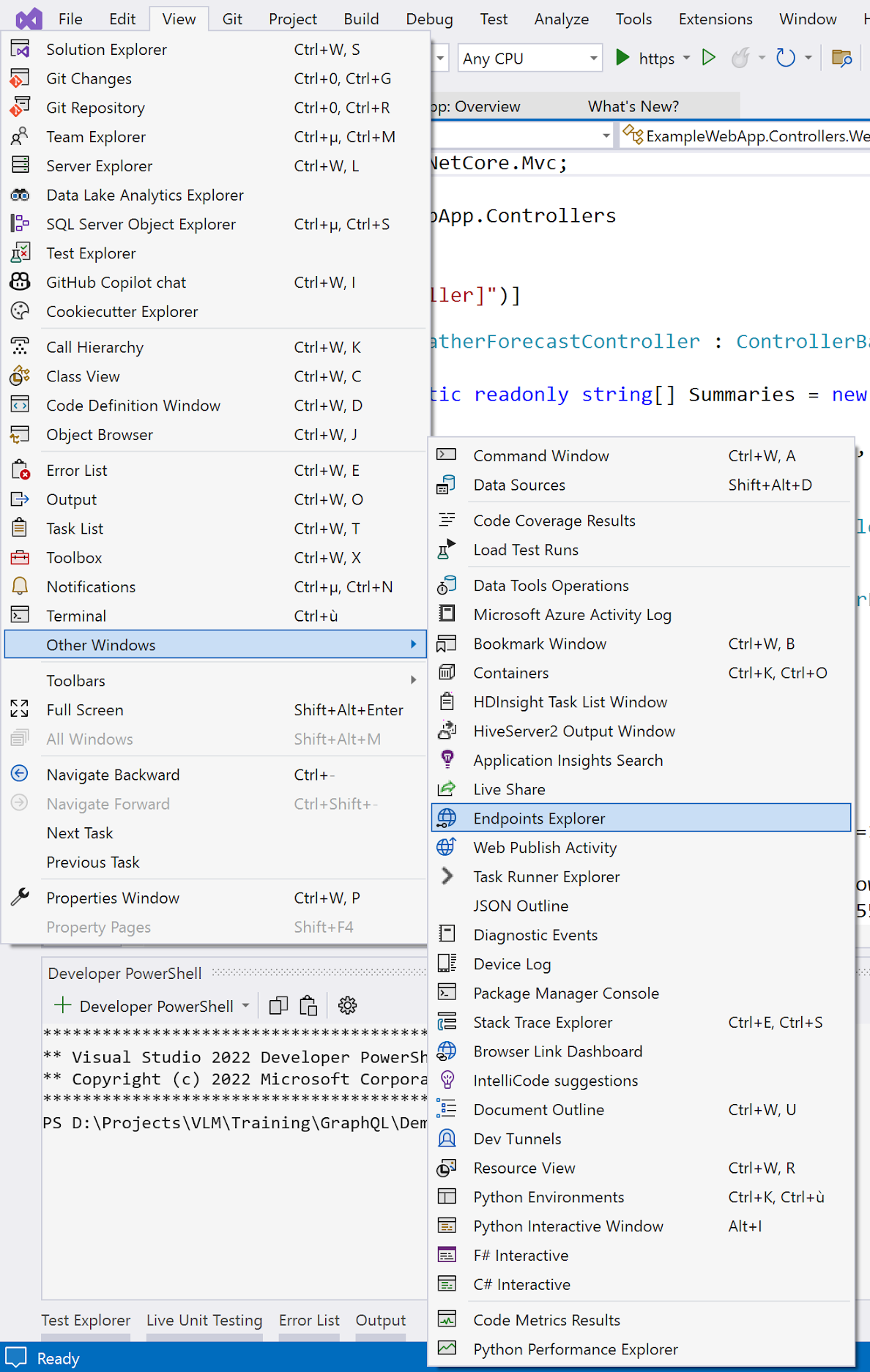I occasionally switch to Jetbrains Rider and Visual Studio Code, but my favorite IDE is and remains Visual Studio(especially with the Github Copilot integration). With the 17.6 release a new feature was introduced; the Endpoints explorer.
With the Endpoints explorer, you can view and interact with the API endpoints defined in your solution. To use this feature go to View –> Other Windows –> Endpoint Explorer:
You get an overview of all the API endpoints available in your solution and the available API calls that can be made:
If you right click on an API call, you can choose between Open in the editor to jump to the implementation of the API call or Create Request.
This will create a new HTTP file that can be used to execute the specific request on the endpoint:
Nice!



